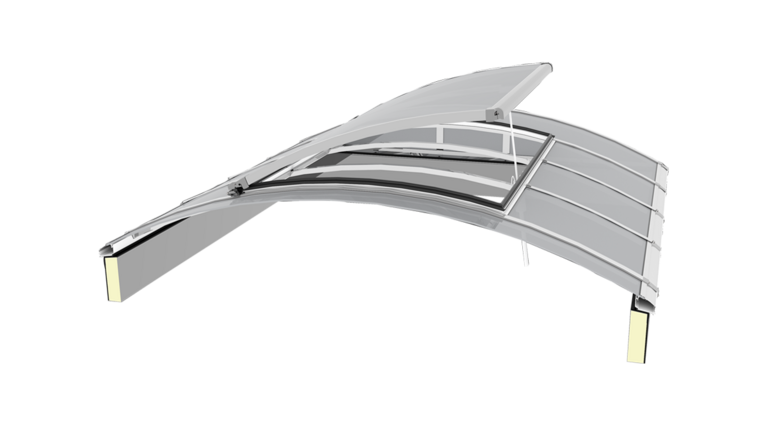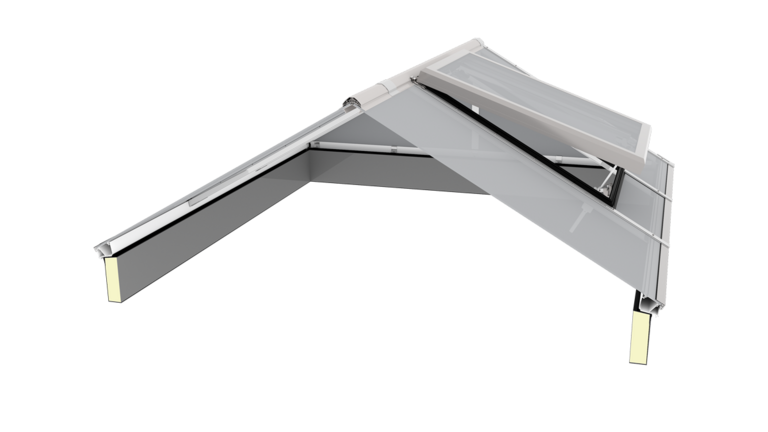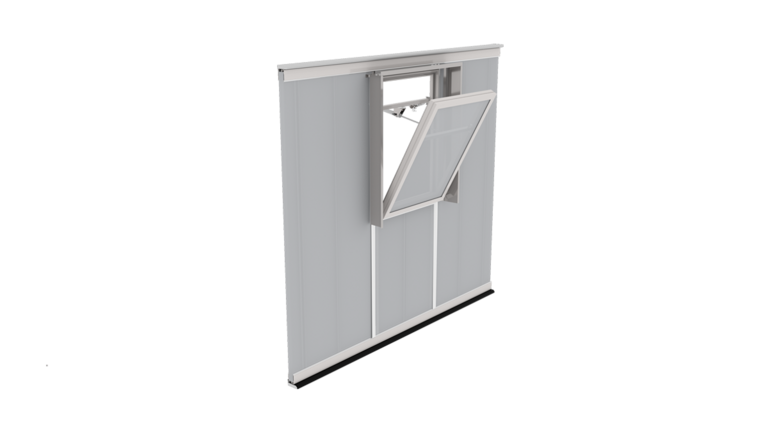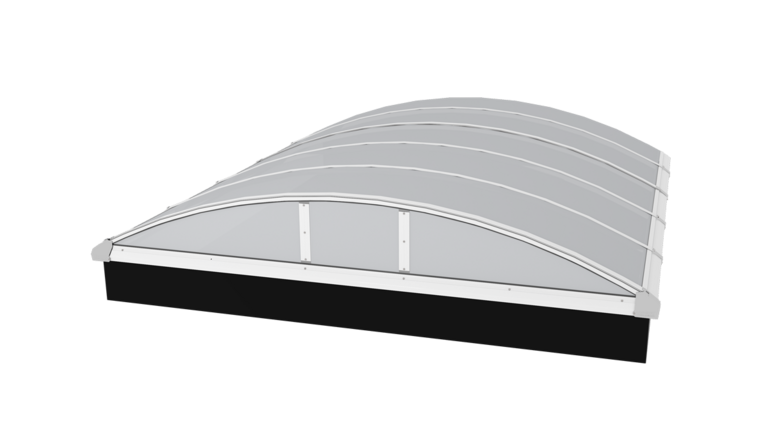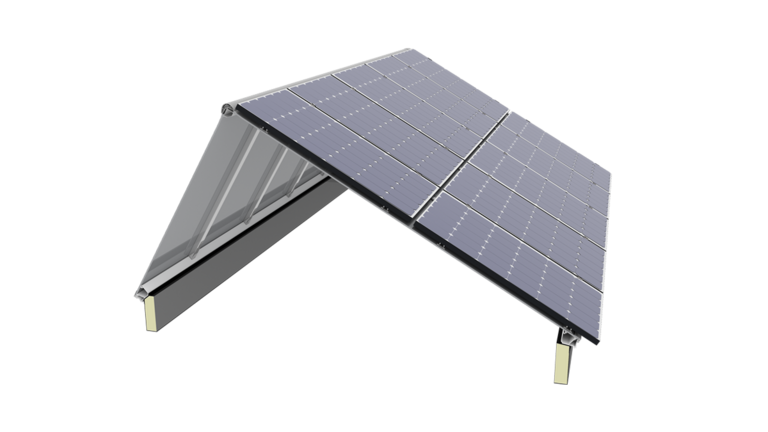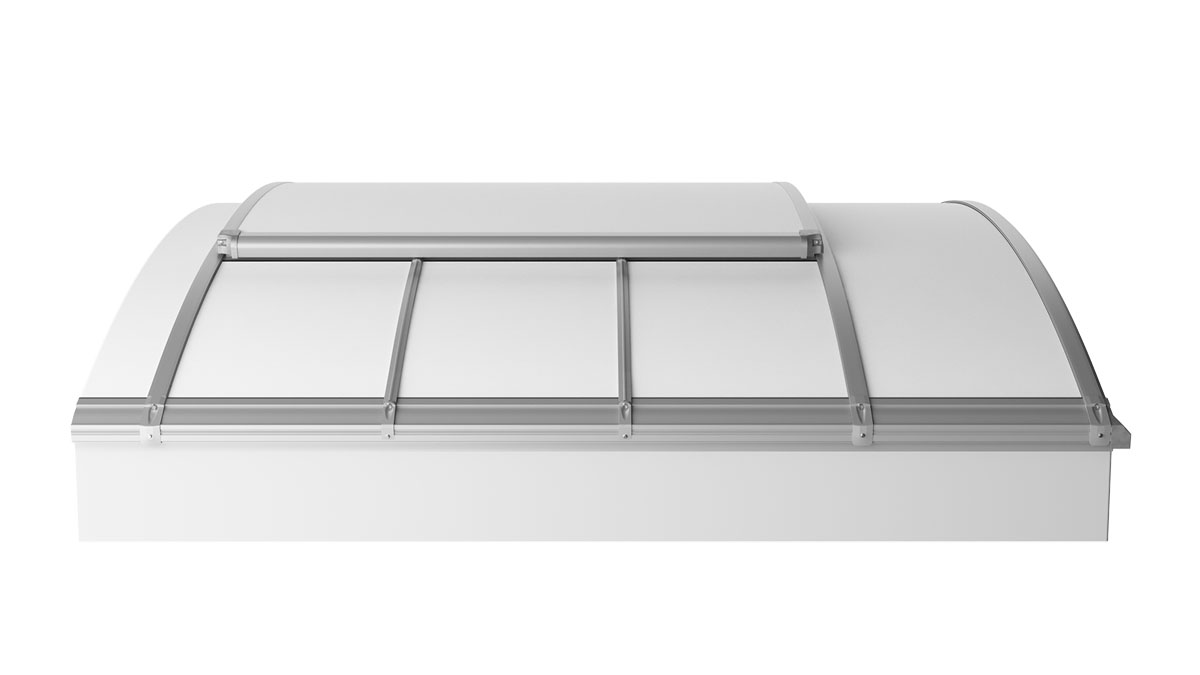
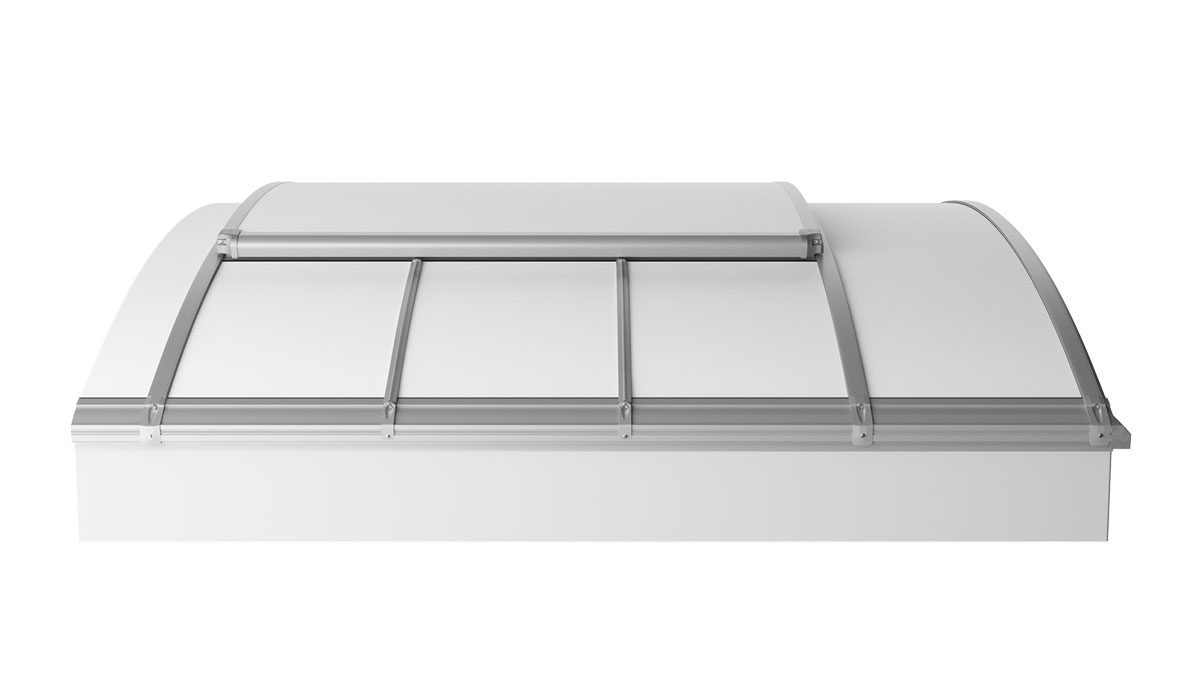
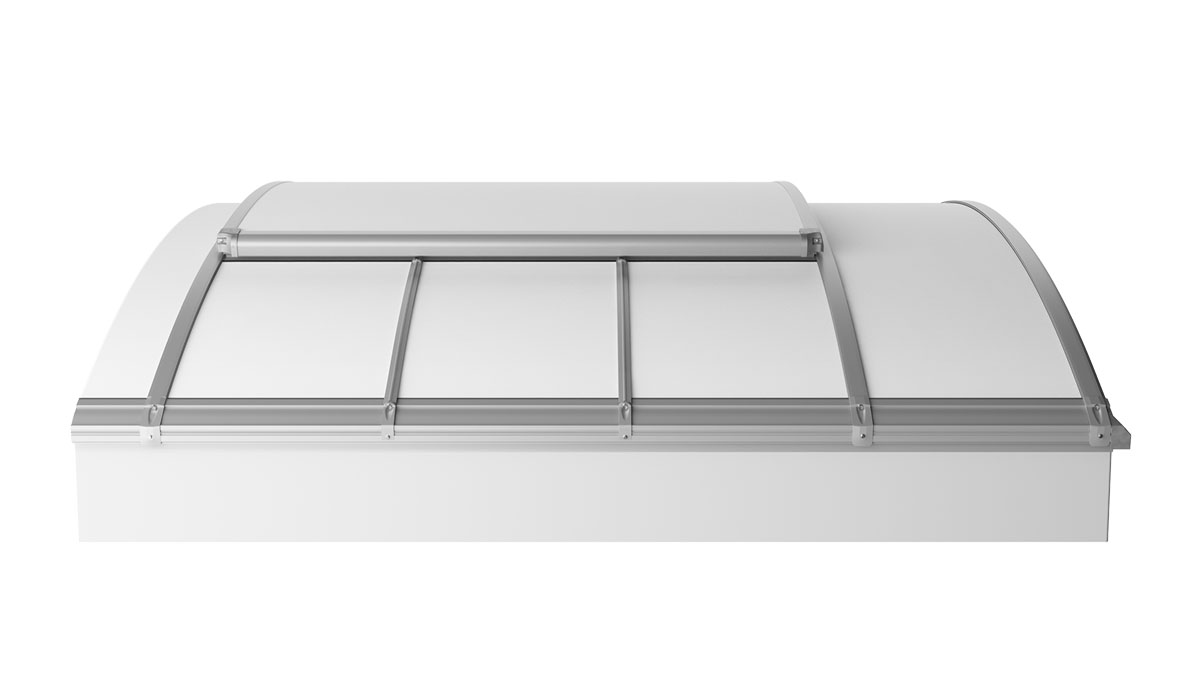
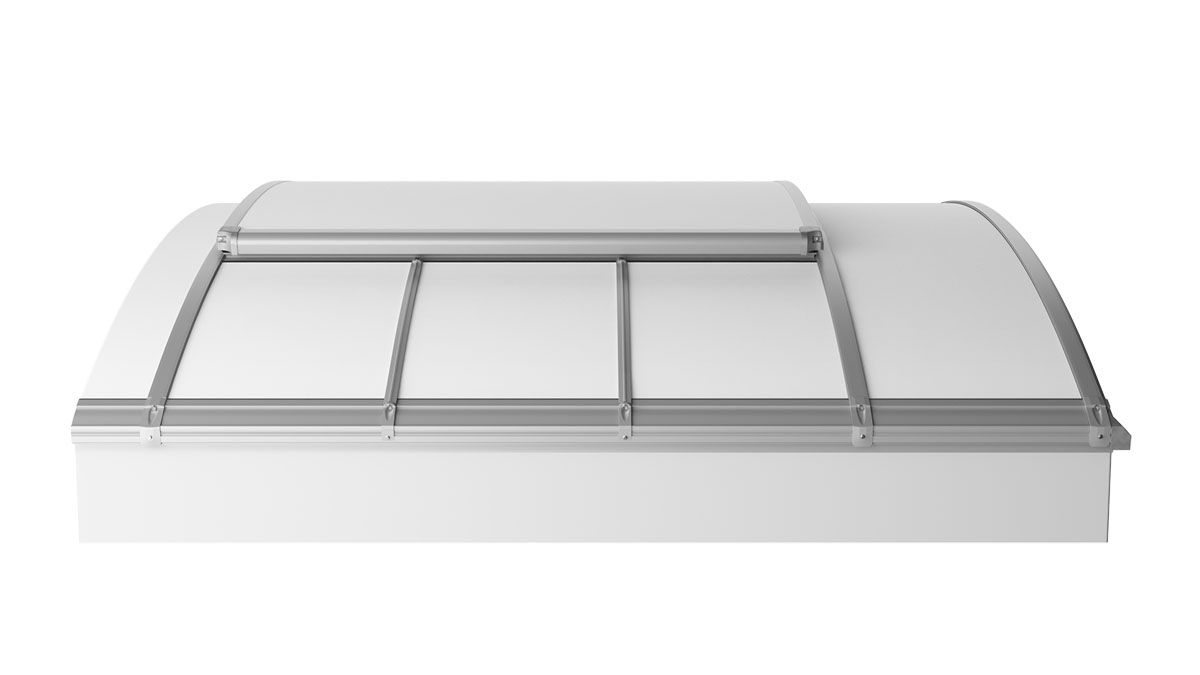
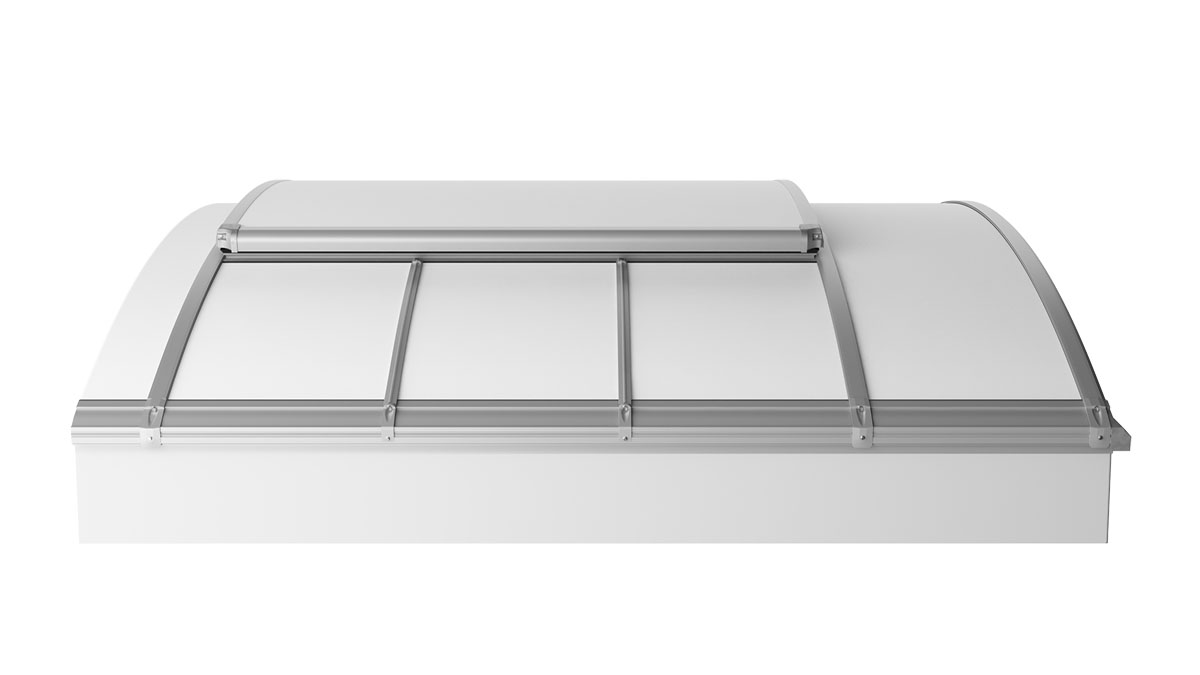
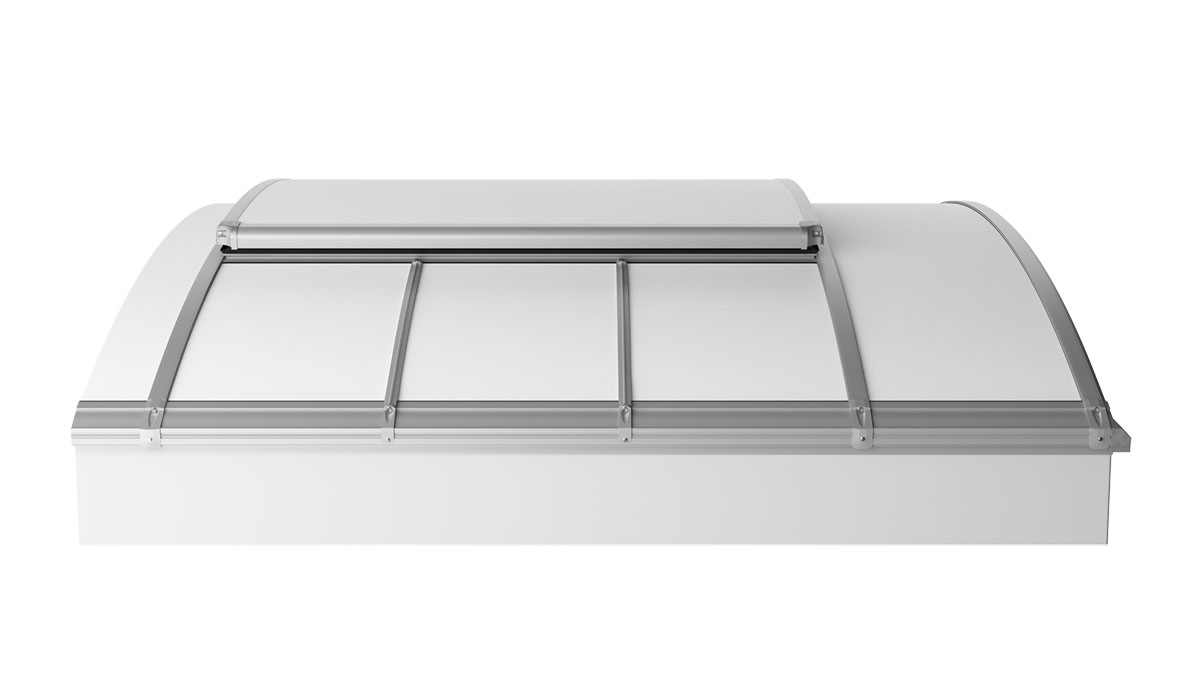
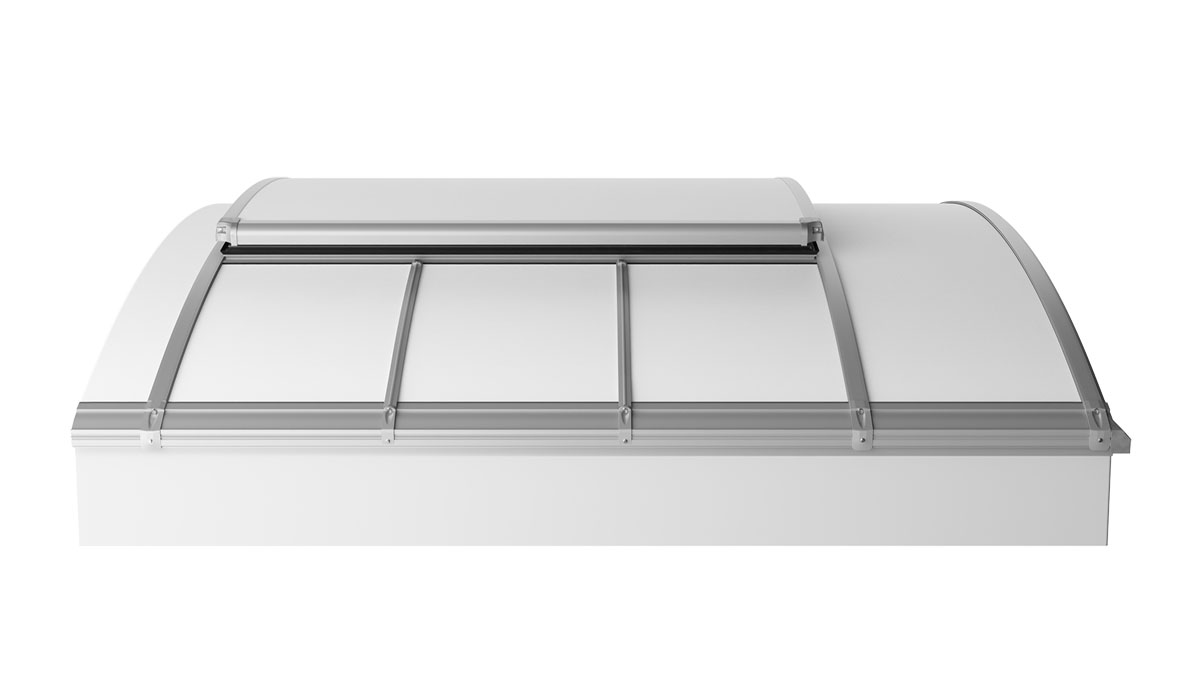
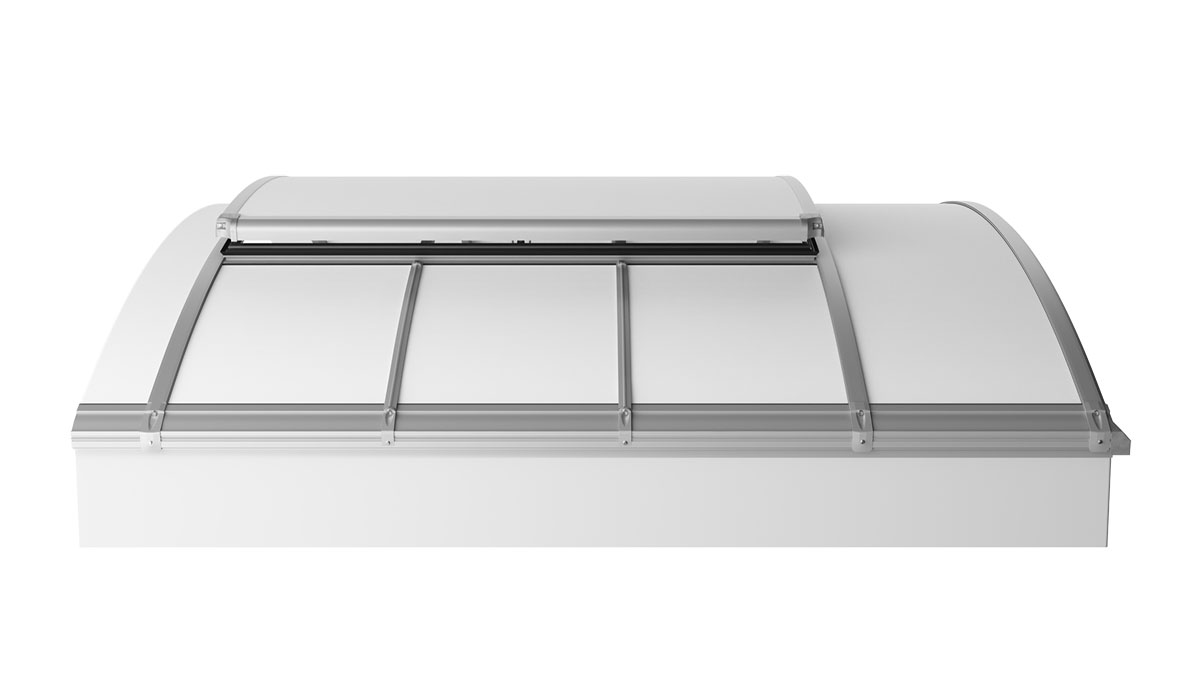
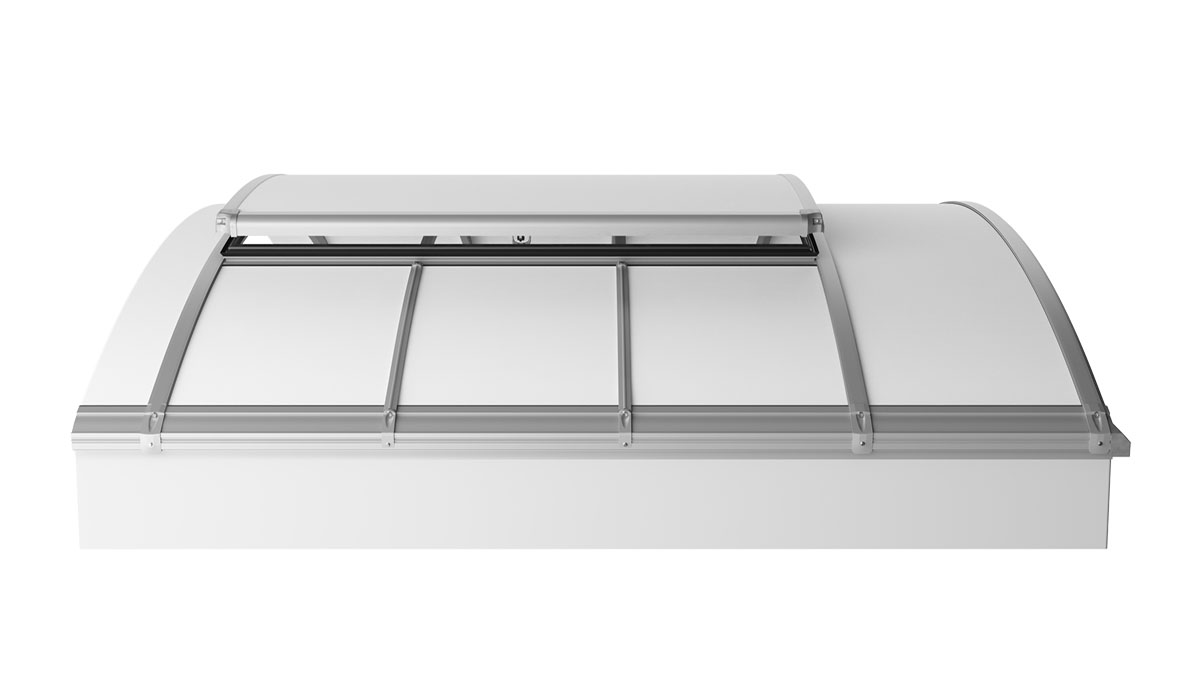
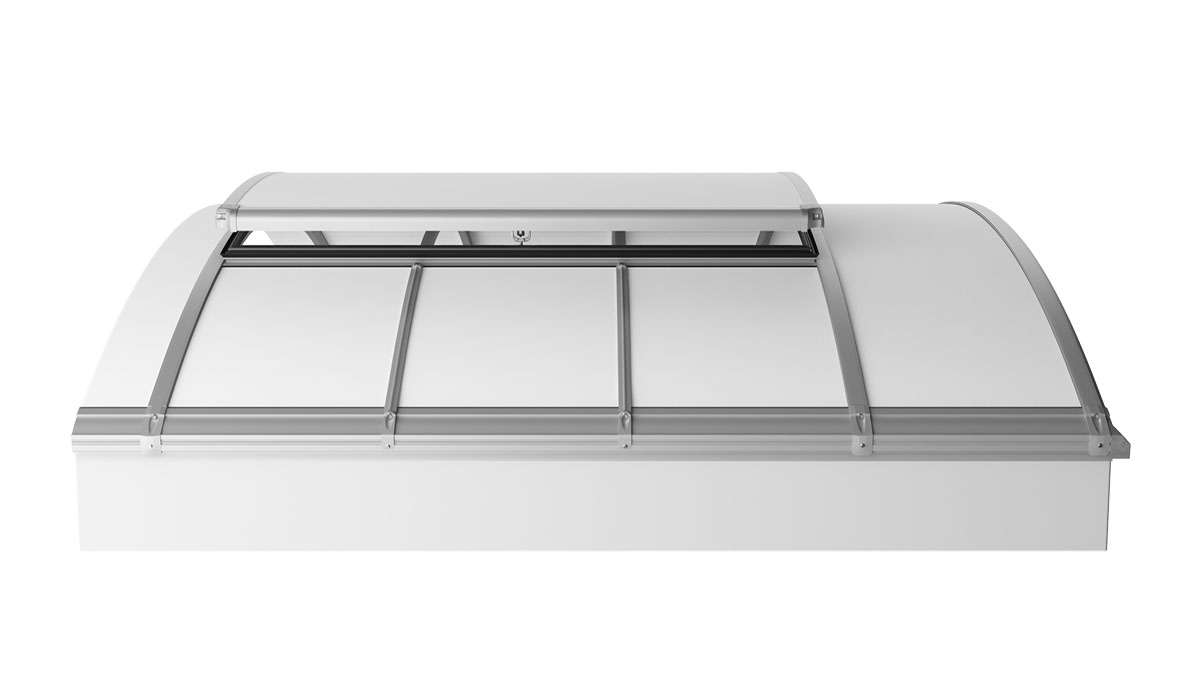
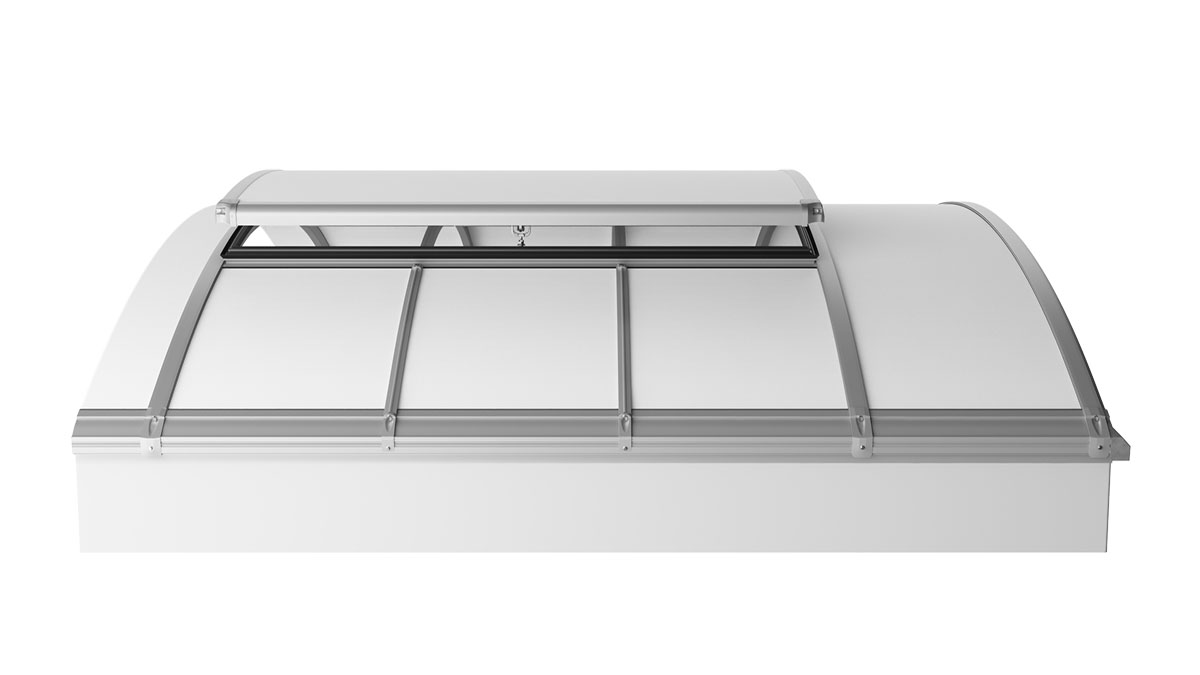
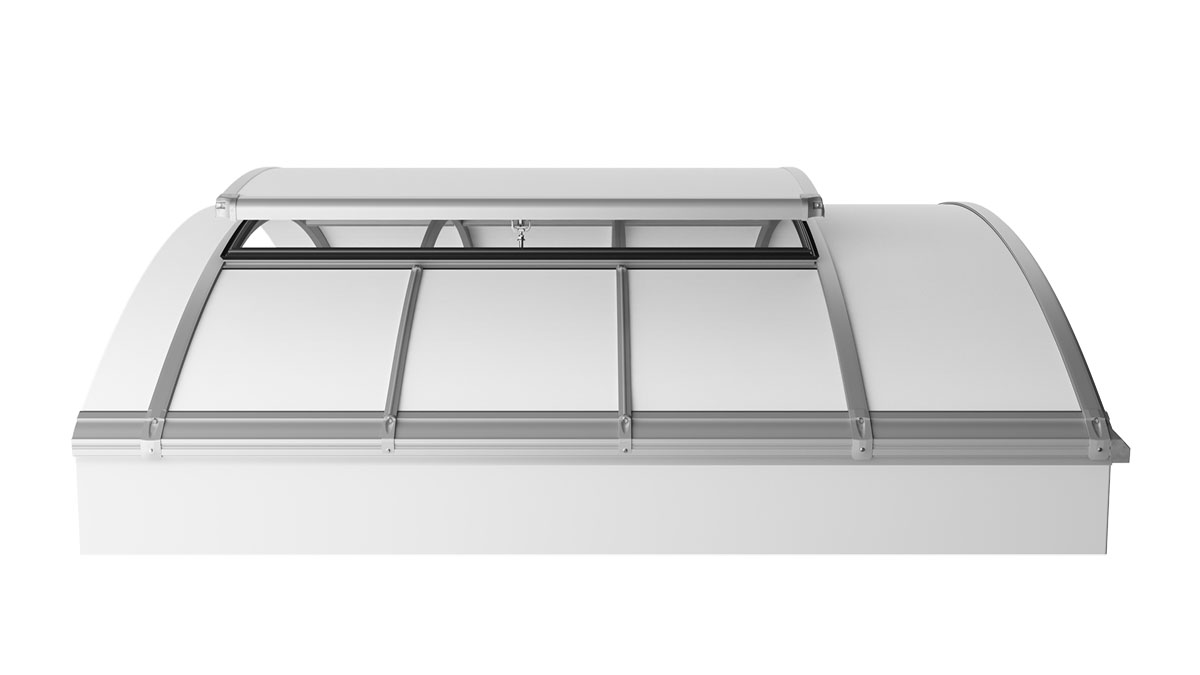
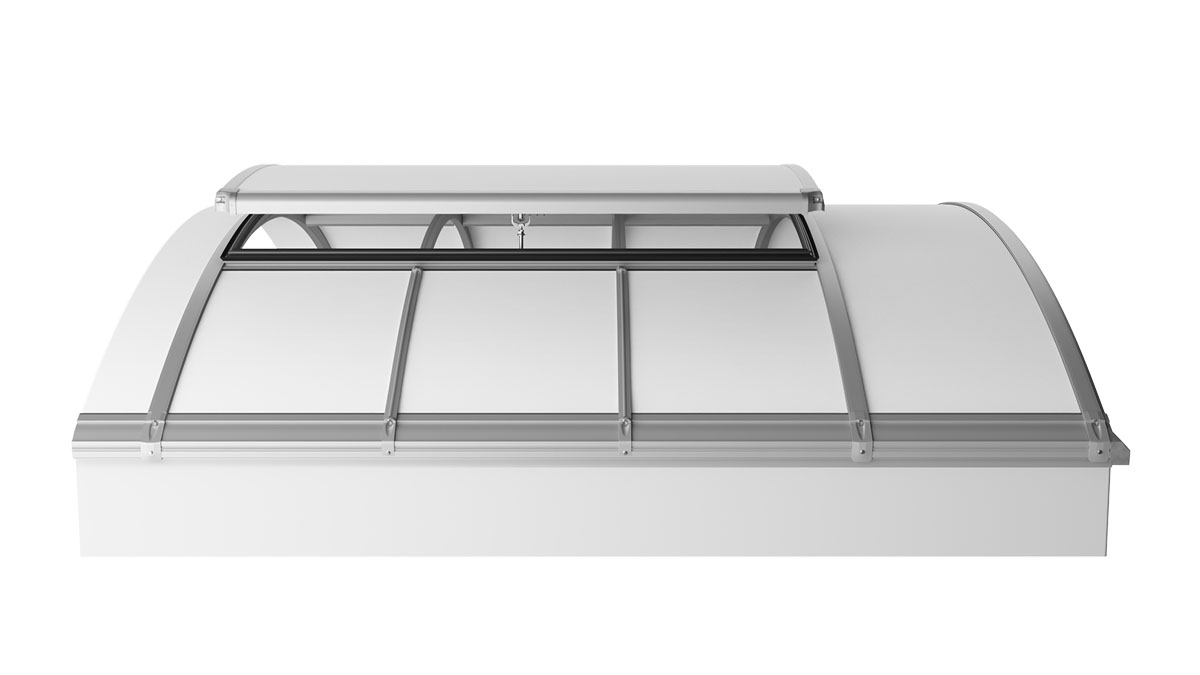
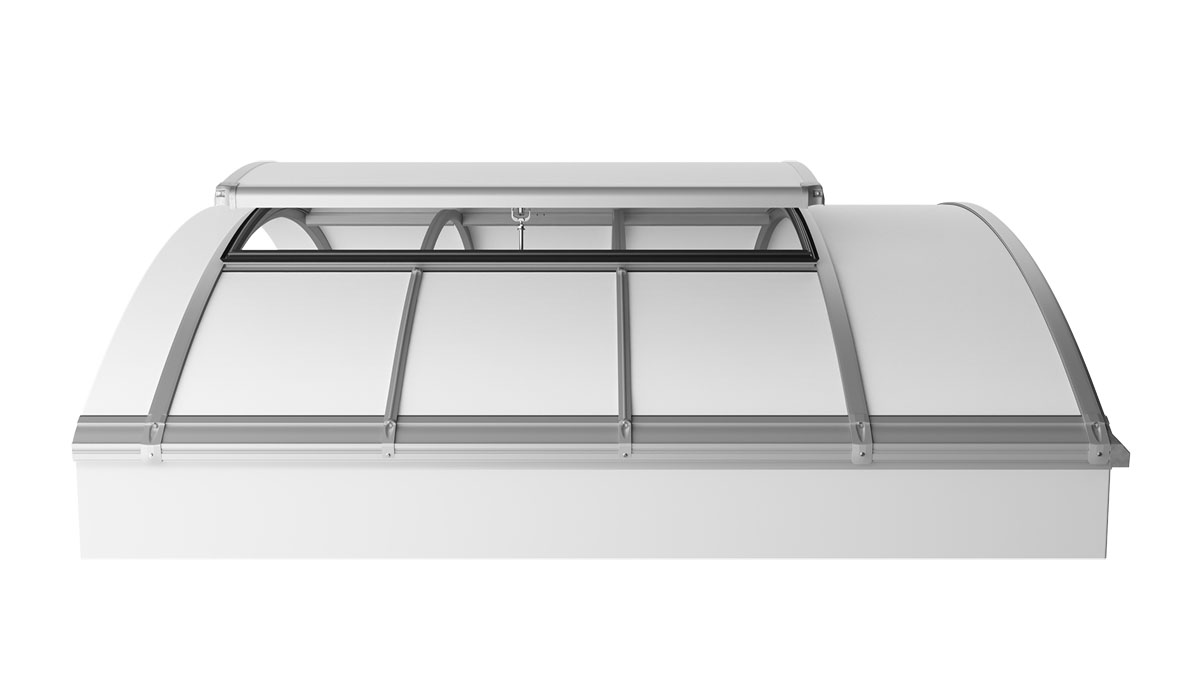
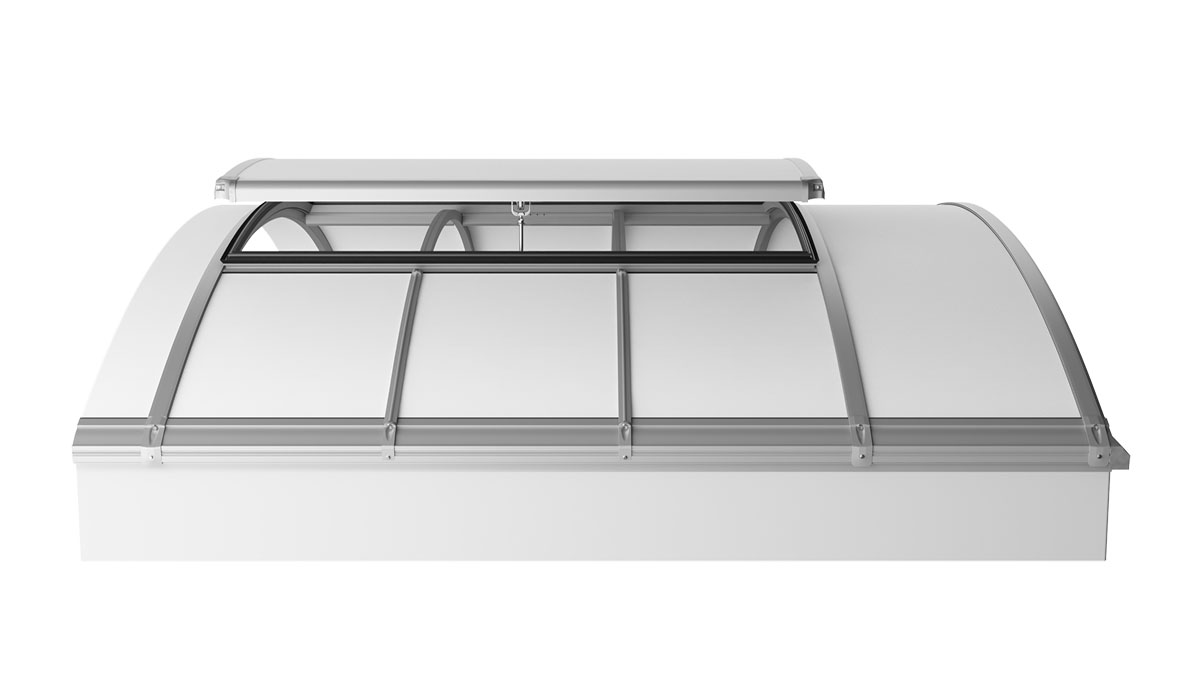
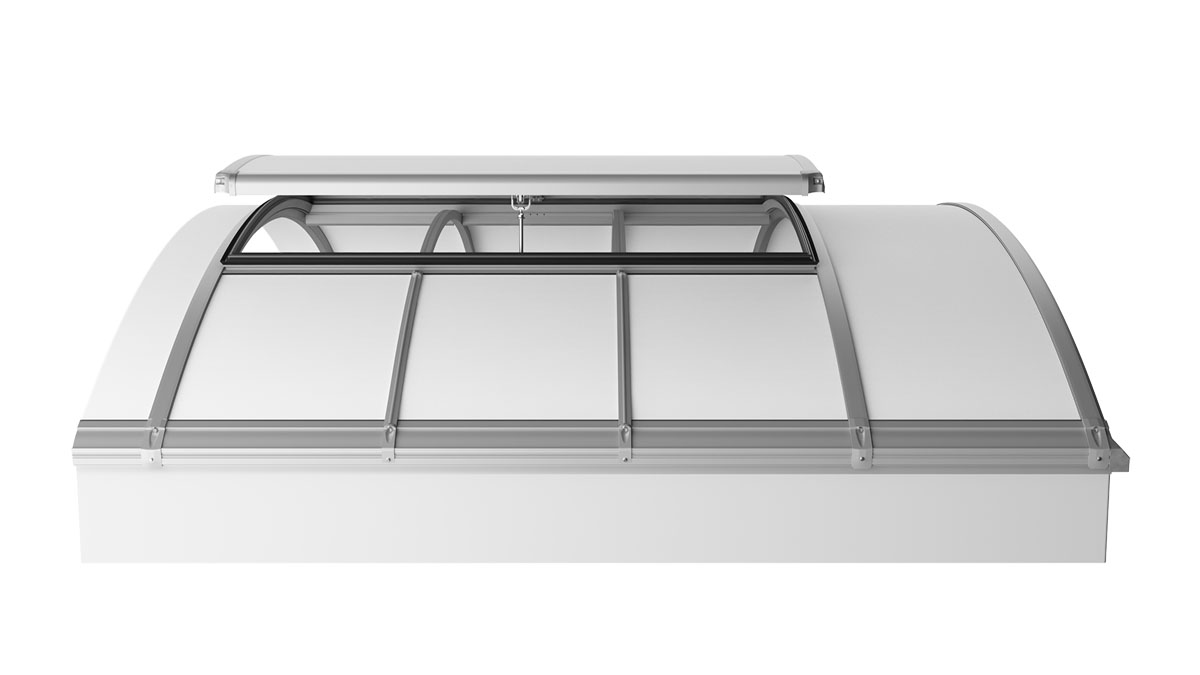
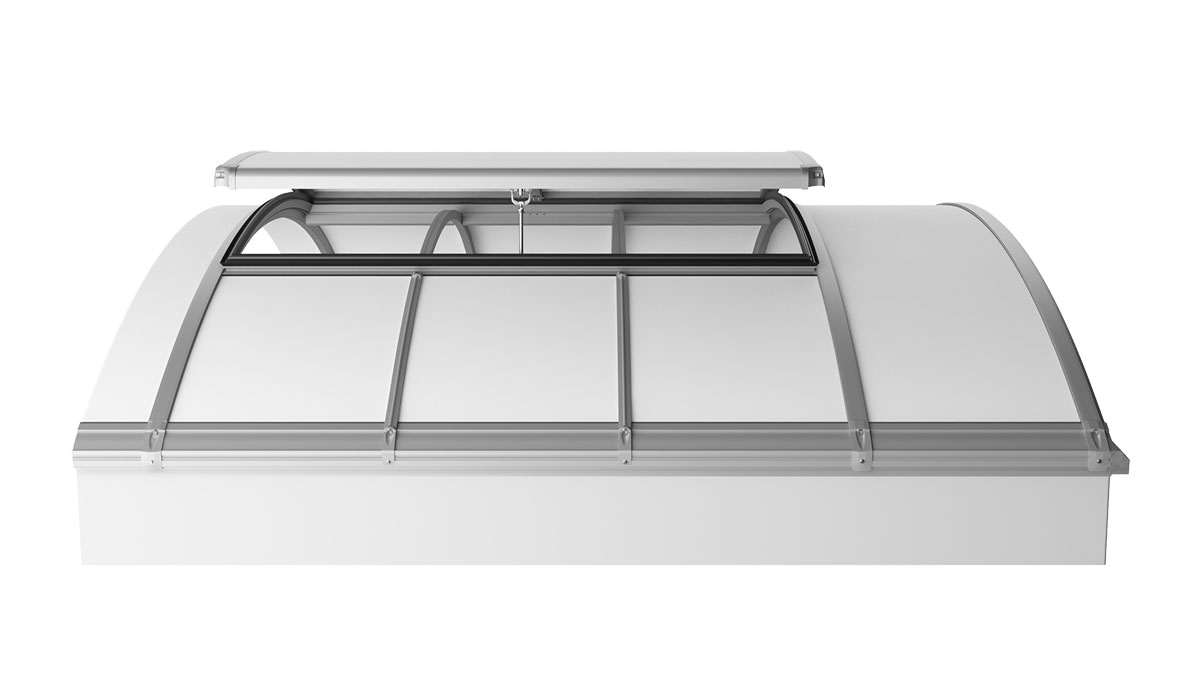
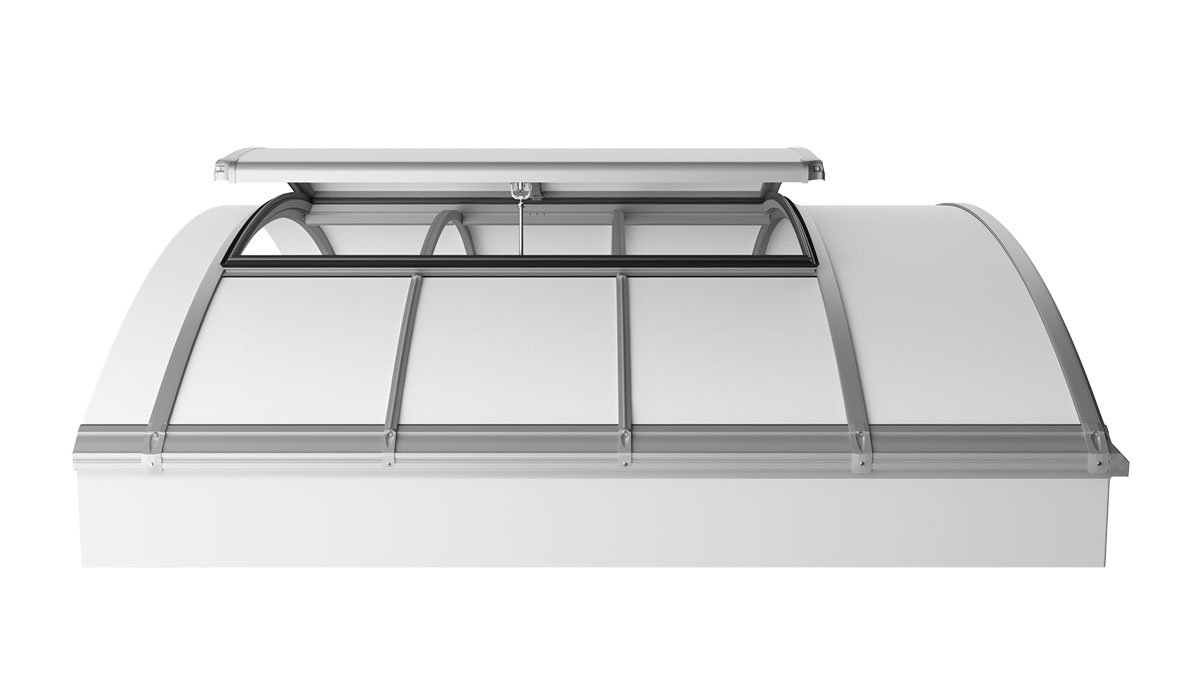
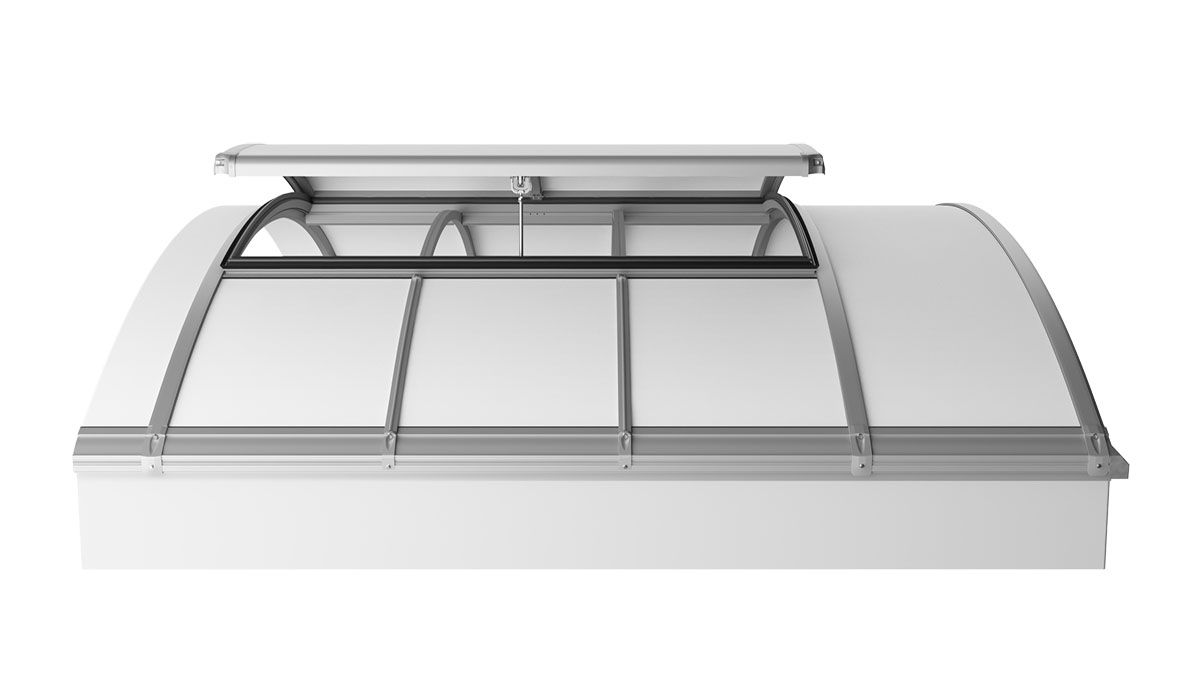
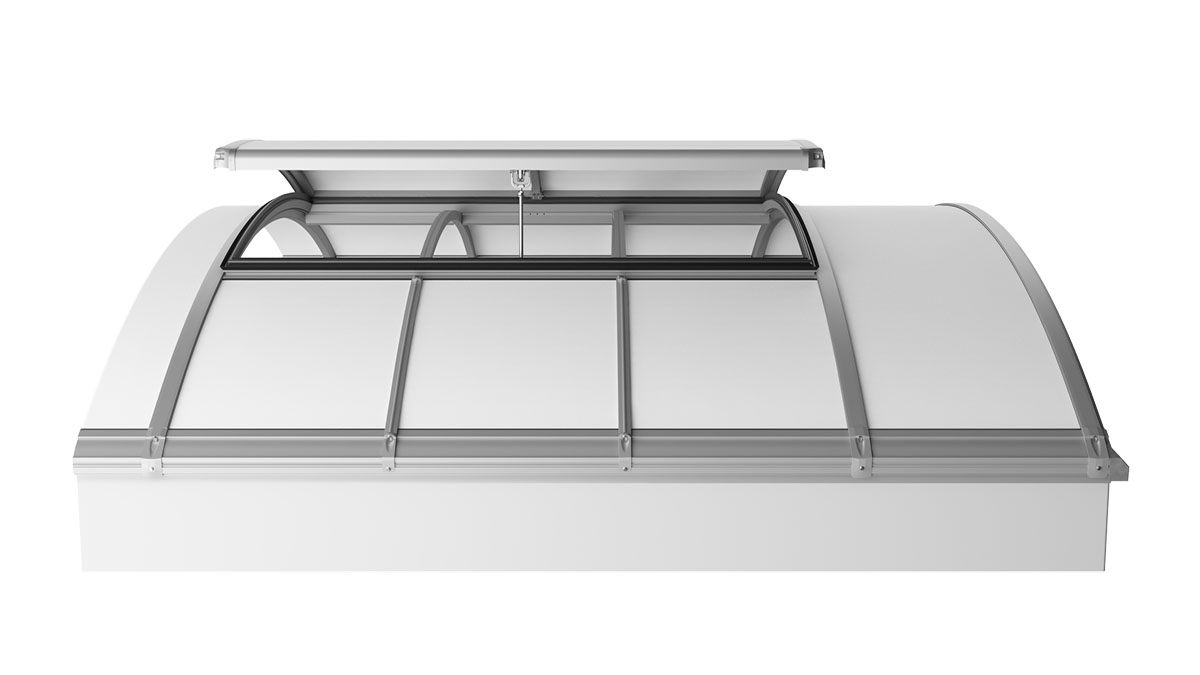
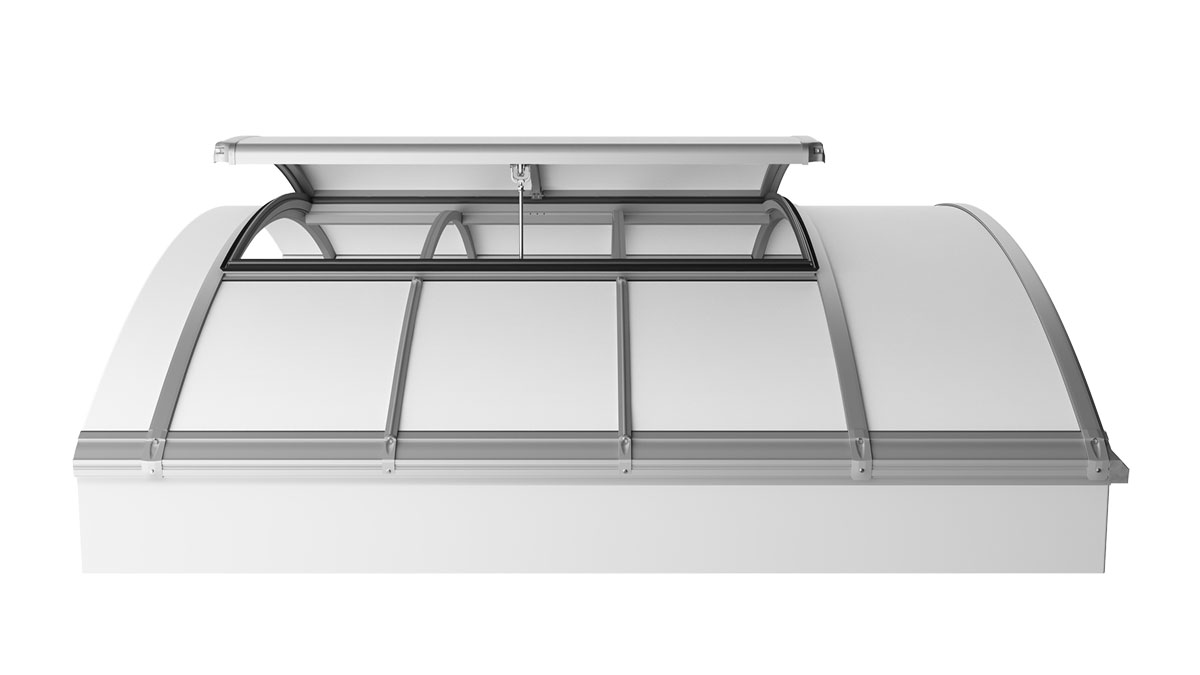
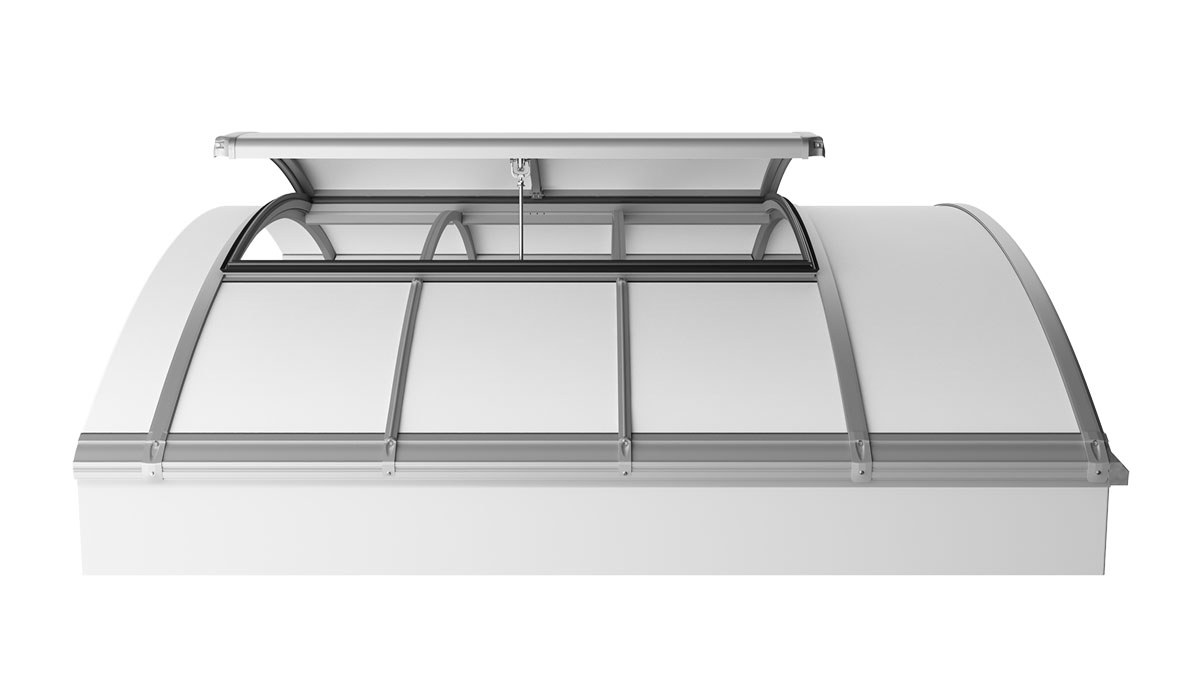
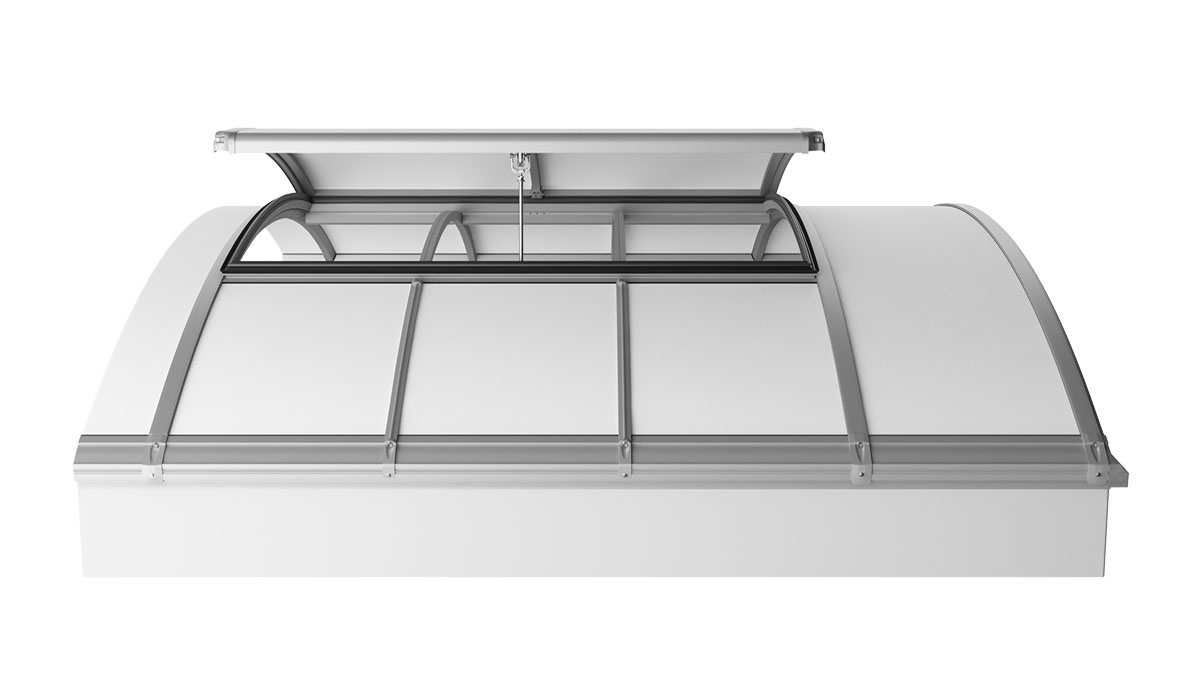
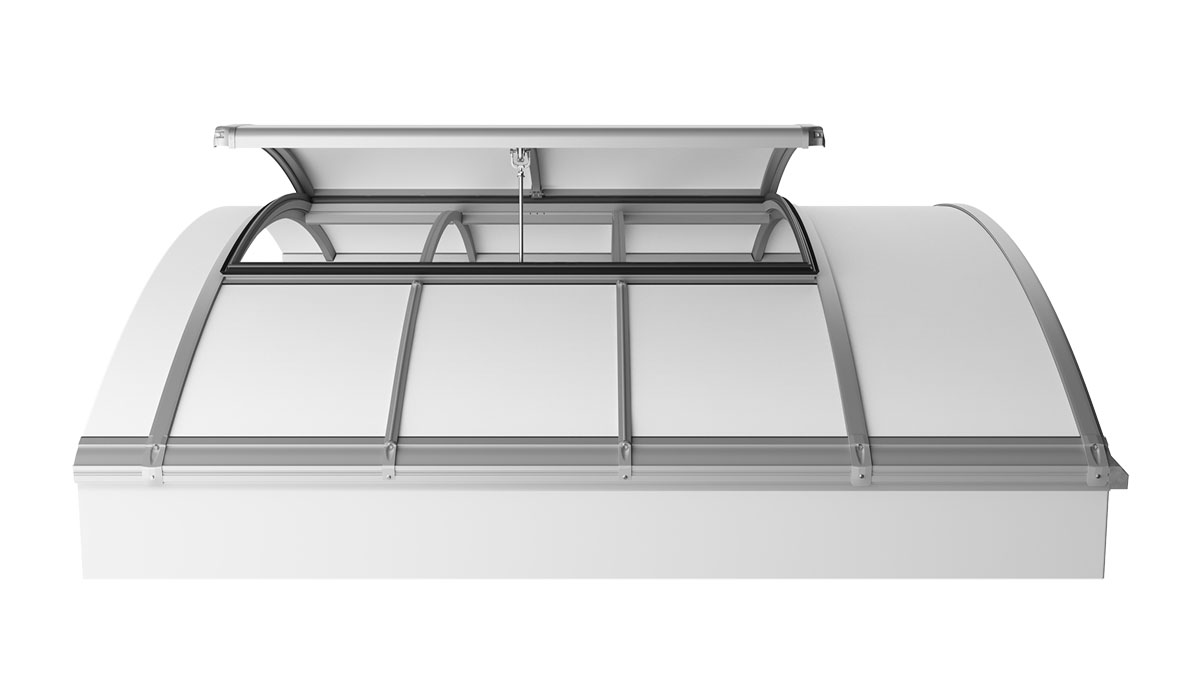
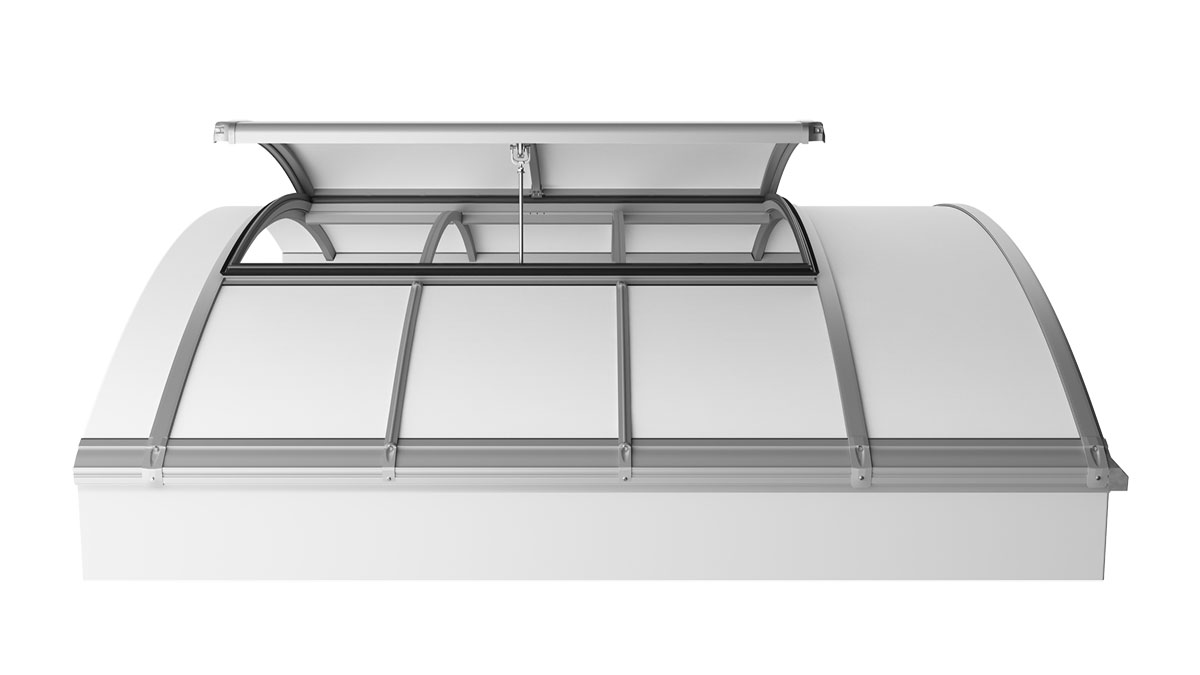
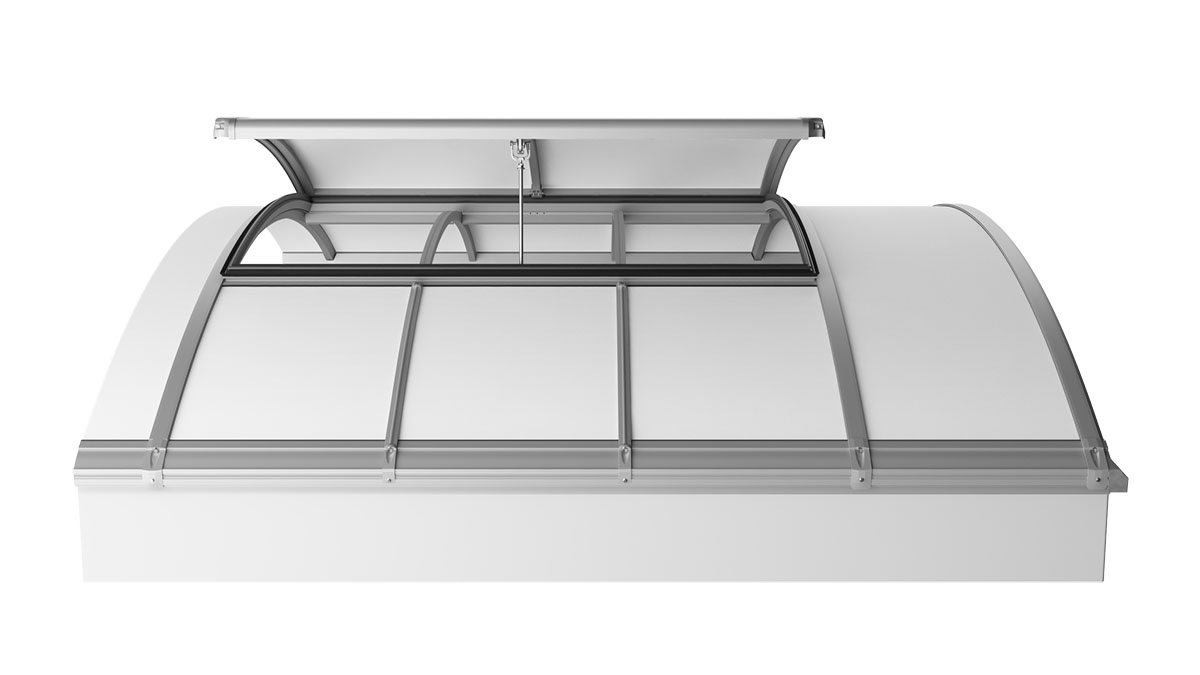
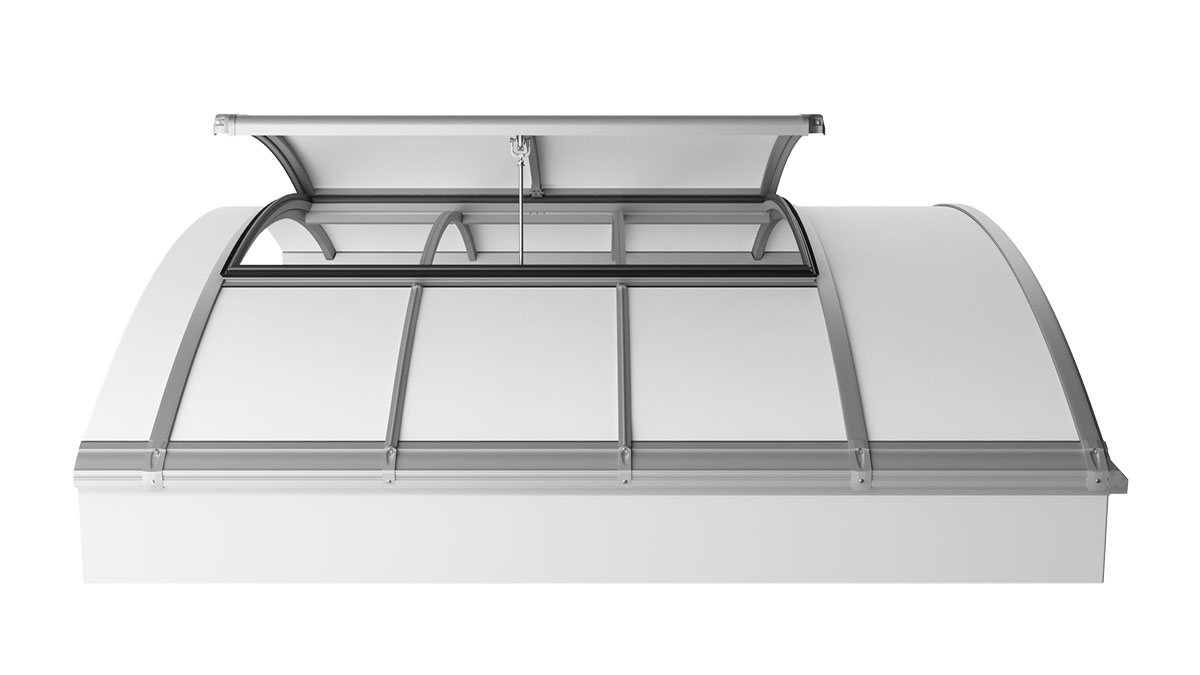
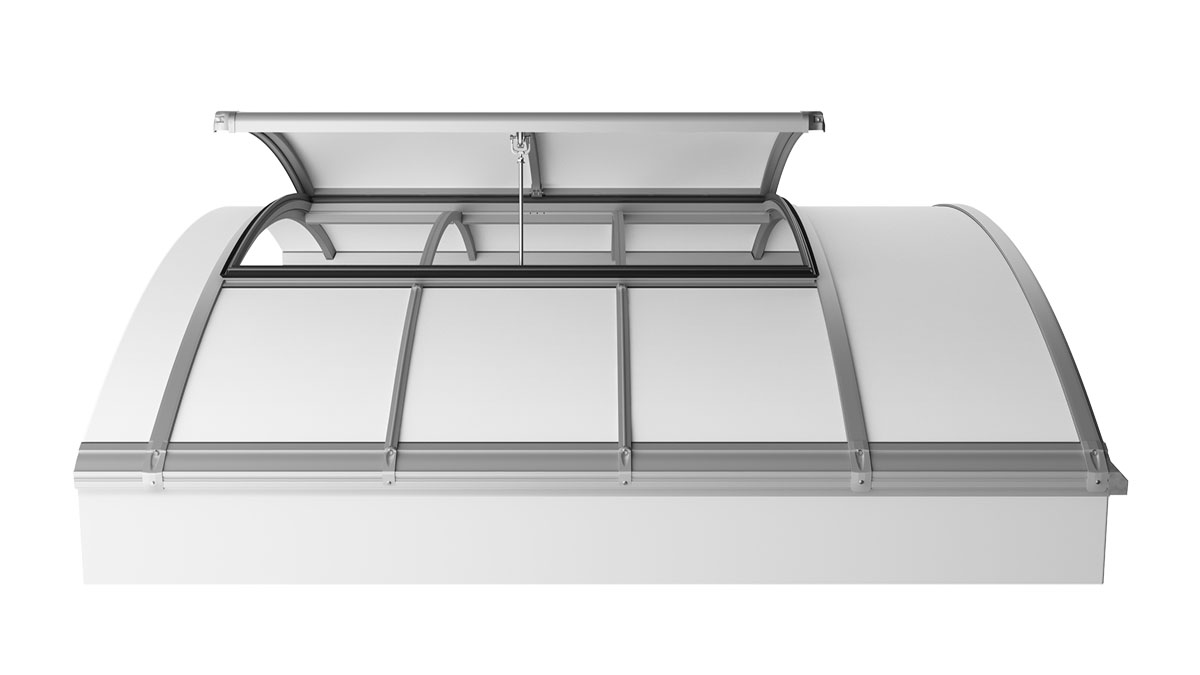
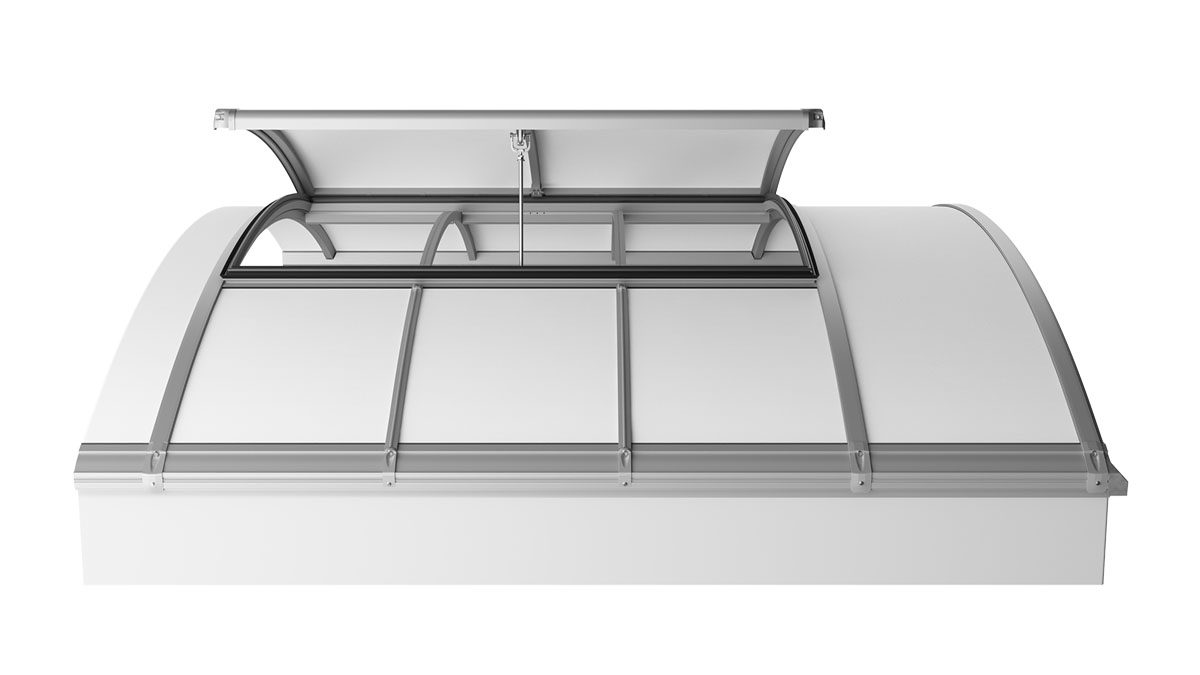
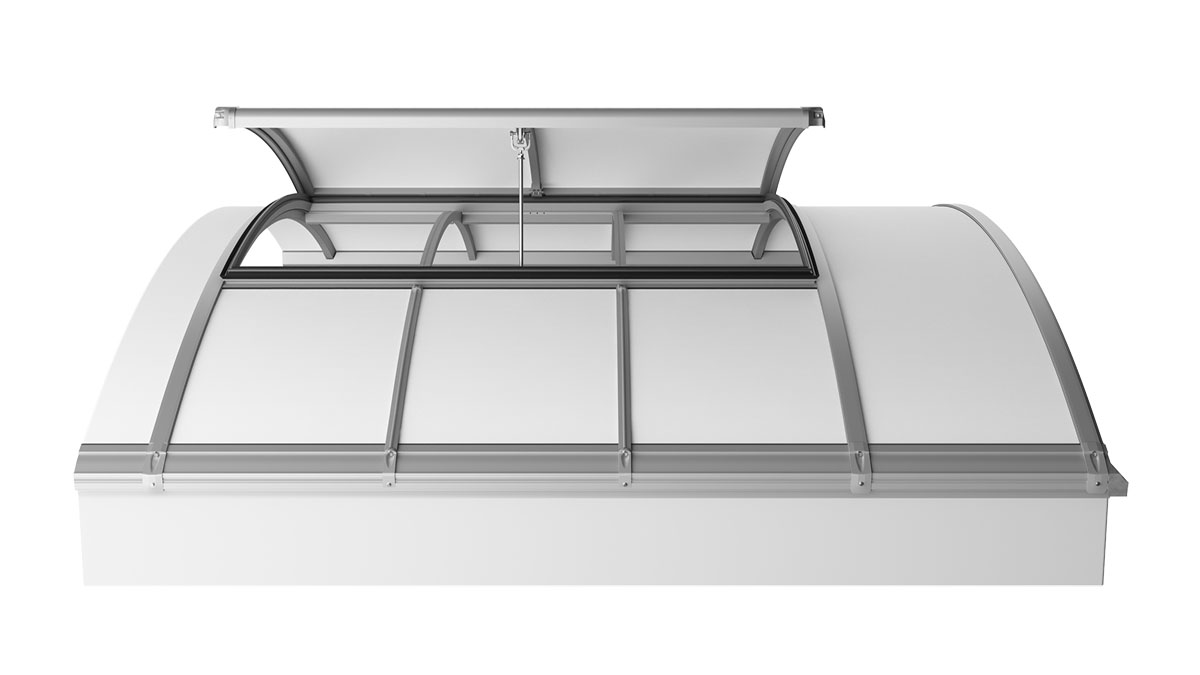
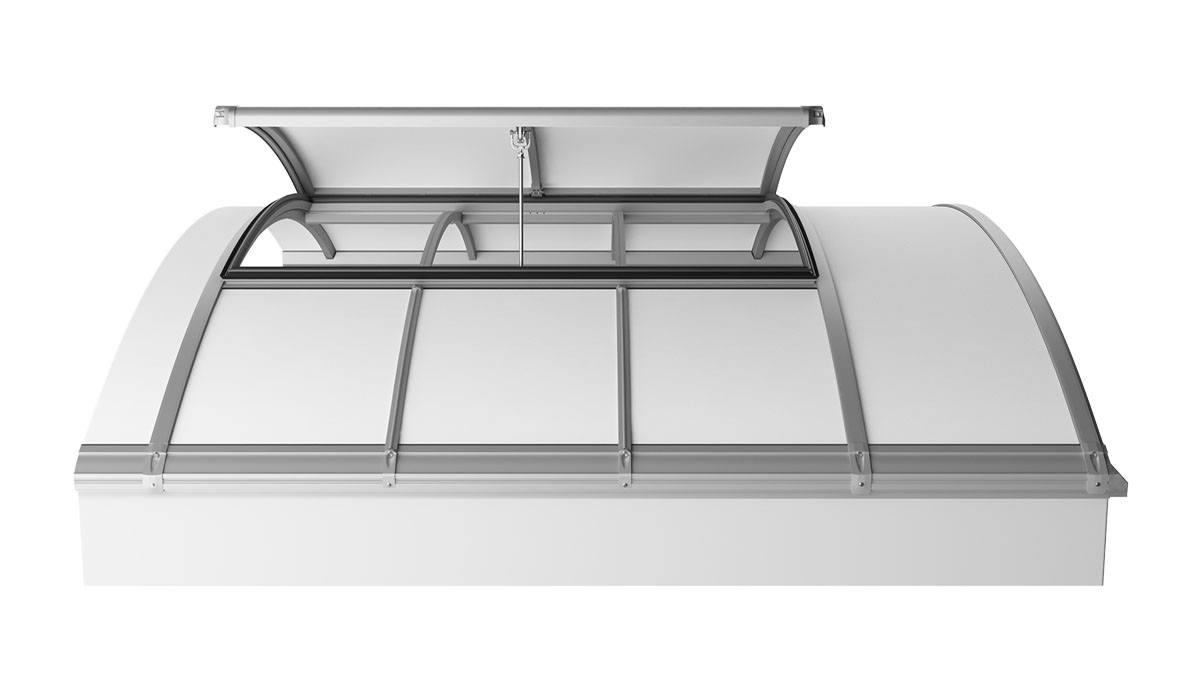
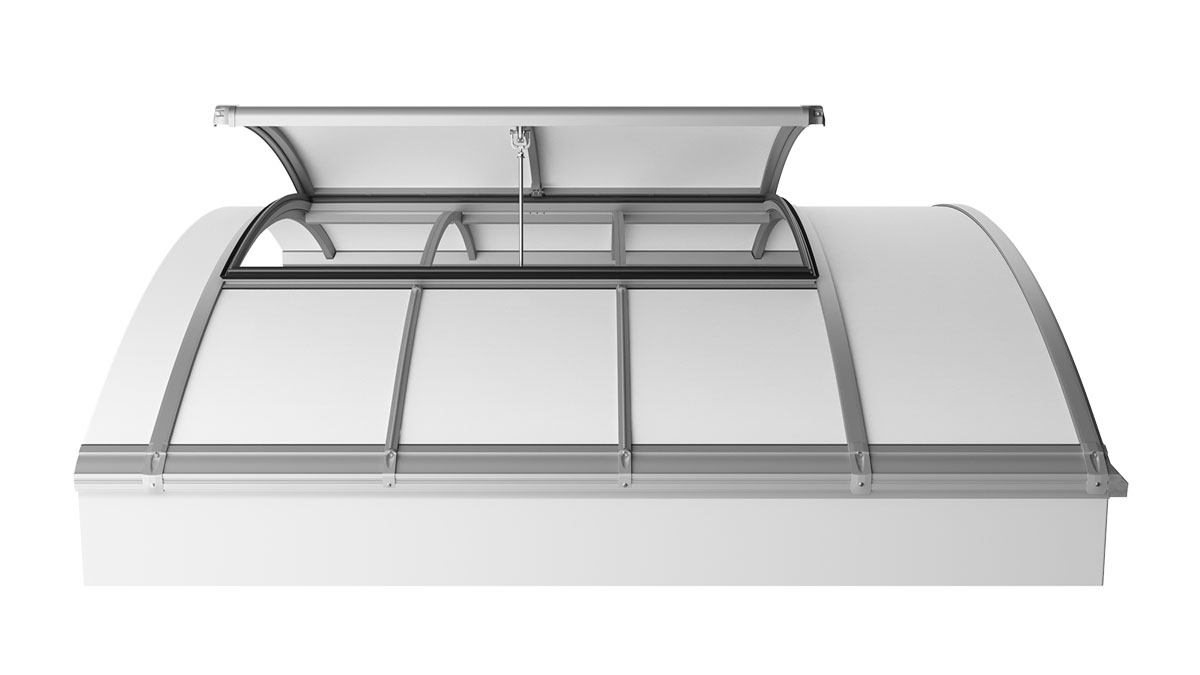
LAMILUX Continuous Rooflight Systems
Energy-efficient building lighting made easy
By using continuous rooflight systems, you save on constant costs that would incur for the operation of artificial lighting systems. In addition, the building owner creates great added value for the people who spend time in the building. More daylight enters the inside and thus increases the sense of well-being. Continuous rooflight systems are particularly suitable for large flat roofs, as a large-scale skylight system can then be installed. A continuous rooflight system consists of many perfectly matched individual components. As a result, it does not only serve to illuminate a building, but also as a natural ventilation and smoke and heat extraction system. An individual concept can be created according to your needs and wishes. For this purpose, 3 basic variants are generally available: Continuous Rooflight B in arched design, Continuous Rooflight B in Passivhaus standard and the Continuous Rooflight S in ridged roof design. In addition, the product portfolio also includes the Translucent Façade and Roof, which is optimally suited for walls and renovations, and the Continuous Rooflight S energyline with photovoltaic systems.
When choosing an energyline product, you do not only permanently reduce energy costs, but also produce your own electricity at the same time. This is particularly sustainable and should be considered in times of climate change. Ventilation and smoke/heat extraction flaps that can be integrated into every continuous rooflight provide optimum smoke extraction and ventilation of the building. At LAMILUX you will find the right solution for every need.
Choose your suitable continuous rooflight system
Incidence of light in industrial, storage or sports halls
Isothermal curves without a weak point
Systems with optimised energy performance of buildings
Our demand: products that make a significant contribution to the optimised energy management of your building. Because old and often inadequately renovated buildings often have a considerable energy loss. Weak points - such as windows and doors - in the building shell are the main contributors to this. Building components such as windows or doors tend to form thermal bridges at critical points such as frame areas or fastening materials. A typical phenomenon that can then be observed: In winter, flat windows start to tarnish on the inside at the edge of the pane. Condensation forms more easily at these points, leading to the development of mould. This cannot be assessed by means of the U-value though, but by means of isothermal curves that are simulated by calculation, or by means of thermal images that are documented on the finished object.
To save valuable energy and at the same time minimise the risk of condensation and health-endangering mould formation, thermal bridge-free constructions are indispensable. This is because condensation occurs wherever the construction has a weak point. To exclude weak points, all components of the continuous rooflight systems must interact optimally in terms of energy. There are various standard conditions for checking and verifying this.
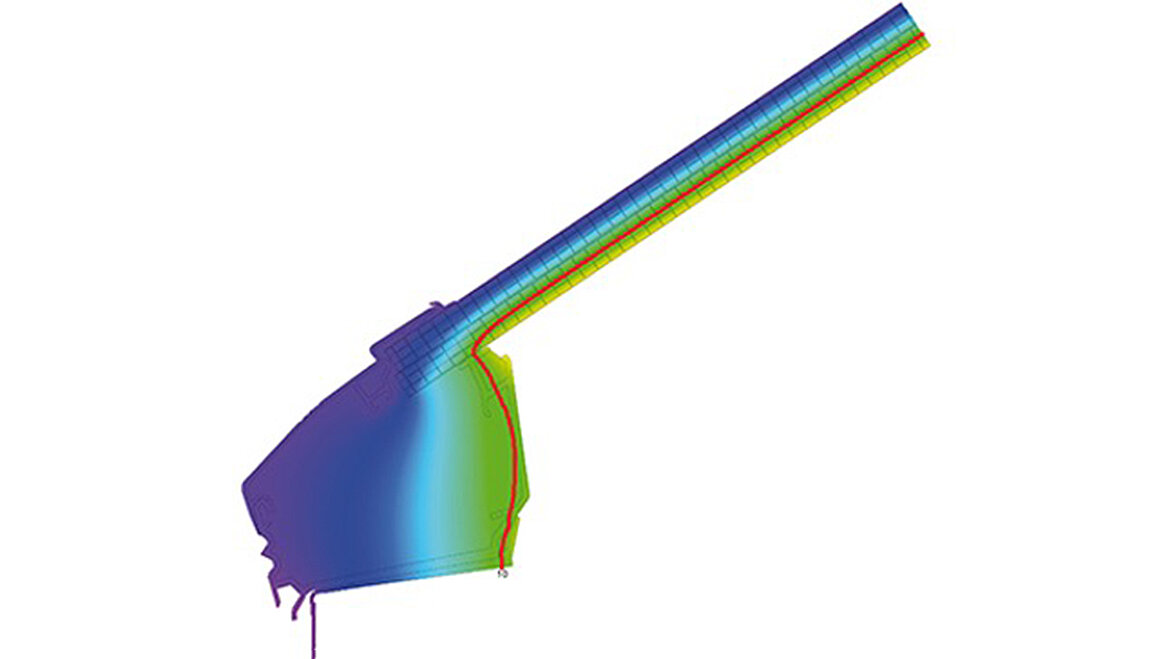
DIN 4108-2 for "Thermal Insulation and Energy Saving in Buildings" sets out boundary conditions for a thermal insulation verification. In addition to using the atmospheric conditions actually prevailing on site, the standard stipulates minimum evidence for 20°C indoor air temperature and -5°C outdoor air temperature. These parameters can be used to determine isothermal curves for the building components. When evaluating the isotherm course, in particular the course of the 10° - curve is analysed, since condensation occurs at a relative humidity of 50%. As long as the 10° isotherm runs over the entire building component and the structure connections within the construction, no condensation is to be expected. Here, the surface temperature is strongly dependent on the components used. At LAMILUX, the glazing with the lowest U-value already fulfils the requirement of the 10°C isotherm. The good energy efficiency properties of our continuous rooflight systems have been tested and proven in accordance with ETAG 010.
The LAMILUX Smoke Lift for Continuous Rooflight B and S
Safety with smoke and heat extraction systems with simultaneous natural ventilation
If a fire has broken out in a building, immediate action must be taken. The LAMILUX Smoke Lift for Continuous Rooflight B and S is indispensable in cases like this, as it ensures that escape routes are cleared of smoke. Why is this important? The fire and smoke gases produced by a fire are harmful to health and machinery and in the worst case can quickly lead to death. With SHEVS that open automatically in case of fire smoke, an important step has been taken towards meeting the protection goals according to DIN 18232. These protection goals include the protection of people, property, and the environment. Personal protection involves securing escape routes to enable rapid exit from the building. If the smoke layer temperature is below 250° C, there is no risk to persons from radiating heat. Property protection means reducing the impact of fire. This is to prevent the building from being completely filled with smoke and possibly collapsing. It is also intended to ensure that the fire and smoke gases cool down as quickly as possible. This prevents a sudden flash-over, i.e., the sudden change from incipient fire to full fire, which becomes very dangerous within a few minutes. The last protection goal, environmental protection, is achieved by supporting and facilitating fire brigade operations. As a result, qualified extinguishing attempts are started with less use of extinguishing agents and less extinguishing damage.
The smoke lift for our continuous rooflight systems is available in various designs, such as a single flap, a symmetrical or asymmetrical double flap and a tandem serial single flap.
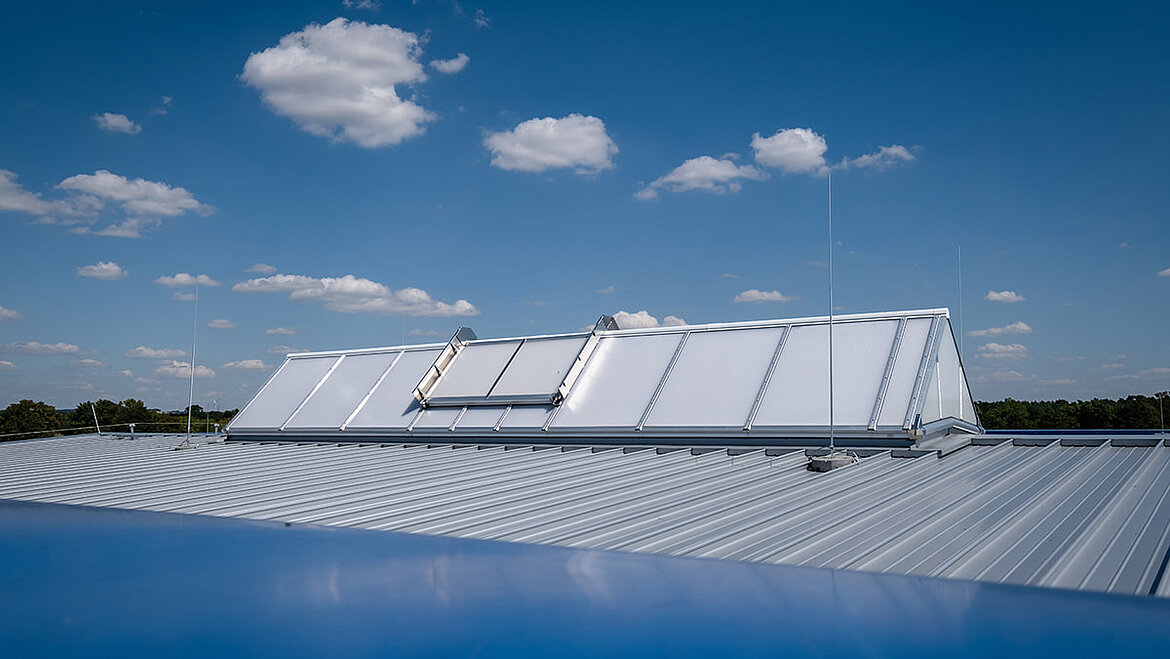
Reference project Lebenshilfe Schweinfurt
Lebenshilfe in Schweinfurt with a total of seven Continuous Rooflights S installed in various lengths. In addition, three fall-through grilles to go with them, seven smoke and heat extraction systems and five Glass Skylights F100 were installed.
Reference project VW dealership Gdansk Poland
VW dealership in Poland with four installed Continuous Rooflights B and one Rooflight F100 with Smoke Lift. In addition, two Glass Roof systems PR60 with a total area of approximately 90 m² were installed.
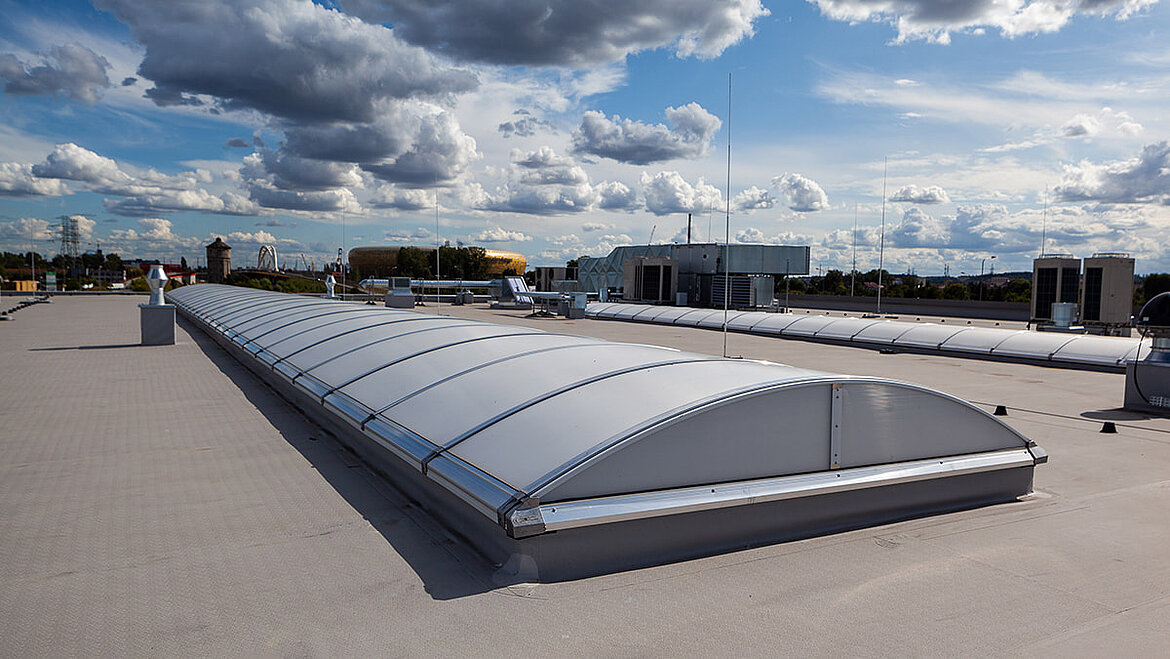
Schedule an appointment for a consultation today
Have a no-obligation expert talk with us
Take the first step towards your project and make an appointment for a no-obligation consultation with our experts. This way we can work out a plan to realise your project.
